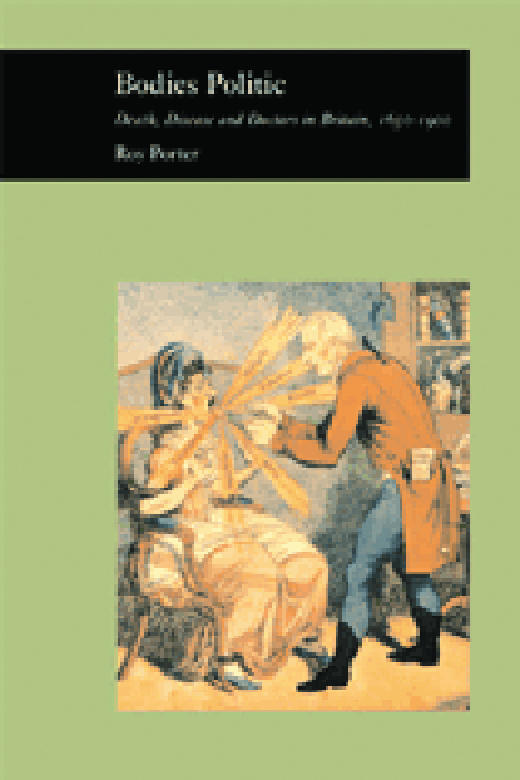Bodies Politic: Disease, Death and Doctors in Britain, 1650-1900 by Roy Porter. Reaktion Books, £25, pp 328. ISBN 1 86189 094 X. Rating: ★★
This book comes well announced: “. . . splendid book . . . a tonic to those dismayed by the current writing-down of English history” (Sunday Telegraph); “. . . exhilarating” (Sunday Times); “simply superb” (New Statesman). This should be enough not only to whet the reviewer's appetite but also to bias opinion. And yet my reaction at the end of an enjoyable read is one of disappointment, disappointment that a magnificent opportunity to do justice to an immense and unique labour of historiography has been squandered. Let me explain. 
Roy Porter's purpose in Bodies Politic is to rescue imagery from obscurity and academic denigration, and to integrate it with the traditional way of portraying history in writing. He rightly sees the microcosm of medicine as “a costume drama or a travelling circus, embodied in performance, rhetoric, and ritual history,” which is therefore ideally suited to the application of an added dimension, namely the pictorial medium.
On one front he succeeds, but his publisher fails him, and fails him badly. In a book that espouses imagery, presentation, design, and reproduction of the chosen imagery are paramount, and this book fails in all of these and does the author a grave disservice. Bodies Politic, by the author's own admission, purports to be a “coffee table” book, yet it lacks all the merits of that often deprecated species. It is too small to allow for illustrative display, the design is awful, the pictures are badly reproduced (especially the black and white illustrations), the colour illustrations are grouped in sections so that the reader is forced to flick forward or back to find them, and when they are located the print size of the captions is so small as to be painful to read.
Leaving aside these criticisms, the text is indeed a rollicking jaunt through a quarter century of English medical history. The extent of Porter's research is truly vast, and yet he manages to assemble his material in an erudite and readable style full of surprises and not infrequent gems. For example, when John Radcliffe, who often assumed an anti-intellectual pose, even going so far as to claim he had never read Hippocrates, bequeathed his library to Oxford, Samuel Garth quipped that “it was a bit like a eunuch founding a seraglio.” The social attitudes of the times are joyously put in perspective (and not so joyously illustrated) from Swift's denigration of the aging trollop, to James Graham's exhortation that “the genitals are the true pulse, and infallible barometer of health,” and onwards to the Victorian era and the likes of Lancet founder Thomas Wakley, whose contribution to progress, in Porter's view, was his recognition that the sorry state of medicine was attributable to it being “a house divided against itself.”
Bodies Politic is both a failure and a success. One hopes that the book can be published again doing justice to the illustrative material.
Footnotes
Reviews are rated on a 4 star scale (4=excellent)


